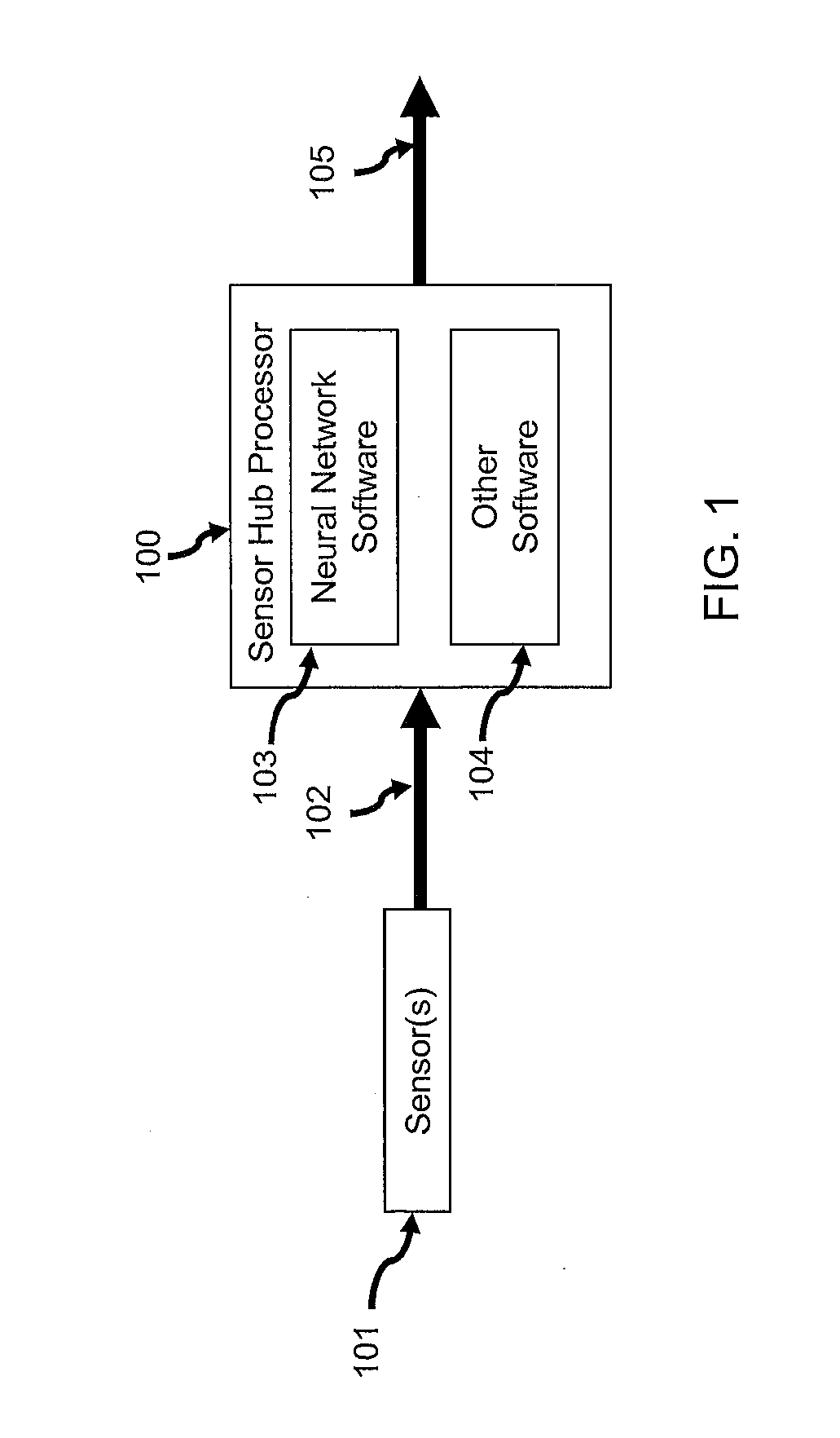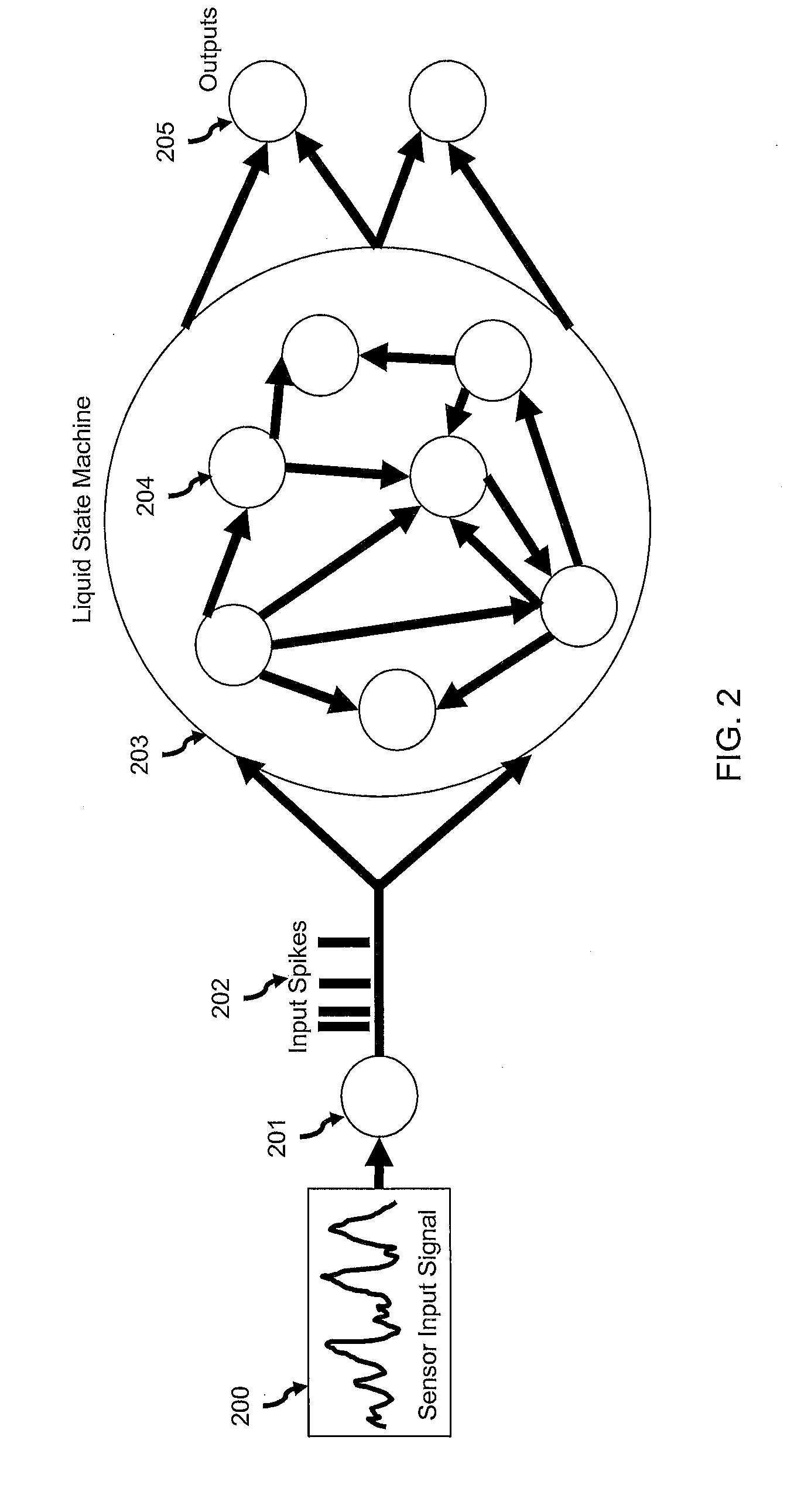Neural sensor hub system
a sensor hub and sensor technology, applied in biological neural network models, instruments, computing, etc., can solve the problems of significant limitation in design in terms of compute capability, power-hungry typical application processors interfaced to these sensors so as to achieve energy-efficient continuous sensing, less power, and clear limitation of performance and resources
- Summary
- Abstract
- Description
- Claims
- Application Information
AI Technical Summary
Benefits of technology
Problems solved by technology
Method used
Image
Examples
Embodiment Construction
[0020]The following sections provide a detailed description relating to an embodiment of the Neural Sensor Hub System (NSHS)
[0021]As discussed above, there is a clear need for a system that satisfies the following requirements: (1) It is low power, (2) It can easily interface to multiple sensor types, (3) It can accurately detect sensory events of interest and (4) It provides a high degree of flexibility for enhancing event detections or adding new ones.
[0022]Low-power microcontroller hardware, colloquially known as a Sensor Hub, has previously been introduced as a hardware solution for requirements (1) and (2). See, e.g., the article “Littlerock: Enabling energy-efficient continuous sensing on mobile phones” by Bodhi Priyantha, Dimitrios Lymberopoulos and Jie Liu or the U.S. Pat. No. 8,706,172 “Energy efficient continuous sensing for communications devices” issued to Nissanka Arachchige Bodhi Priyantha, Jie Liu and Dimitrios Lymperopoulos. However, the burden of all four requiremen...
PUM
 Login to View More
Login to View More Abstract
Description
Claims
Application Information
 Login to View More
Login to View More - R&D
- Intellectual Property
- Life Sciences
- Materials
- Tech Scout
- Unparalleled Data Quality
- Higher Quality Content
- 60% Fewer Hallucinations
Browse by: Latest US Patents, China's latest patents, Technical Efficacy Thesaurus, Application Domain, Technology Topic, Popular Technical Reports.
© 2025 PatSnap. All rights reserved.Legal|Privacy policy|Modern Slavery Act Transparency Statement|Sitemap|About US| Contact US: help@patsnap.com



